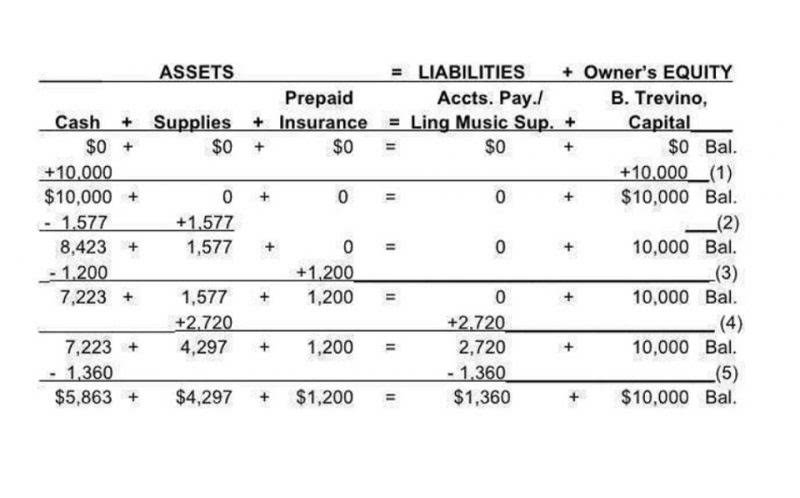News
新着情報
Owners Equity: What It Is and How to Calculate It Bench Accounting
2021.08.31

Because the value of liabilities is constant, all changes to assets must be reflected with a change https://www.bookstime.com/ in equity. This is also why all revenue and expense accounts are equity accounts, because they represent changes to the value of assets. Unlike liabilities, equity is not a fixed amount with a fixed interest rate.

Income and retained earnings
As a core concept in modern accounting, this provides the basis for keeping a company’s books balanced across a given accounting https://x.com/BooksTimeInc cycle. The fundamental accounting equation is assets equalling the sum of liabilities and equity. This equation is the basis for the balance sheet, which summarizes a company’s financial position at a specific point in time. In all of the examples we’ve discussed in this article, the basis of calculating that equity was rooted in this accounting equation. Shareholder equity can also be expressed as a company’s share capital and retained earnings less the value of treasury shares. Though both methods yield the exact figure, the use of total assets and total liabilities is more illustrative of a company’s financial health.
Real-World Example of the Accounting Equation
- Retained earnings are part of shareholder equity and are the percentage of net earnings that were not paid to shareholders as dividends.
- Knowing what goes into preparing these documents can also be insightful.
- The assets should always equal the liabilities and shareholder equity.
- You also don’t include current assets that are harder to liquidate, like inventory.
- Typically, investors view companies with negative shareholder equity as risky or unsafe investments.
- In the U.S., assets are listed on a balance sheet with the most liquid items (i.e., those that are easiest to sell) listed first and longer-term assets listed lower.
Depending on the company, different parties may be responsible for preparing the balance sheet. For small privately-held businesses, the balance sheet might be prepared by the owner or by a company bookkeeper. For mid-size private firms, they might be prepared internally and then looked over by an external accountant. Last, a balance sheet is subject to several areas of professional judgement that may materially impact the report. For example, accounts receivable must be continually assessed for impairment and adjusted to reflect potential uncollectible accounts.

What should I look for on a business’s balance sheet?
- Below liabilities on the balance sheet is equity, or the amount owed to the owners of the company.
- Balance sheets are one of the primary statements used to determine the net worth of a company and get a quick overview of it’s financial health.
- Income is money the business earns from selling a product or service, or from interest and dividends on marketable securities.
- These may include loans, accounts payable, mortgages, deferred revenues, bond issues, warranties, and accrued expenses.
- At this point, let’s consider another example and see how various transactions affect the amounts of the elements in the accounting equation.
The income and retained earnings of the accounting equation is also an essential component in computing, understanding, and analyzing a firm’s income statement. This statement reflects profits and assets = liabilities + owners equity losses that are themselves determined by the calculations that make up the basic accounting equation. In other words, this equation allows businesses to determine revenue as well as prepare a statement of retained earnings. This then allows them to predict future profit trends and adjust business practices accordingly.

The value of the owner’s equity is increased when the owner or owners (in the case of a partnership) increase the amount of their capital contribution. Also, higher profits through increased sales or decreased expenses increase the amount of owner’s equity. The left side of the balance sheet is the business itself, including the buildings, inventory for sale, and cash from selling goods. If you were to take a clipboard and record everything you found in a company, you would end up with a list that looks remarkably like the left side of the balance sheet. Through years of advertising and the development of a customer base, a company’s brand can come to have an inherent value. Some call this value “brand equity,” which measures the value of a brand relative to a generic or store-brand version of a product.